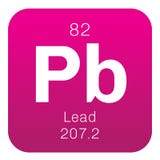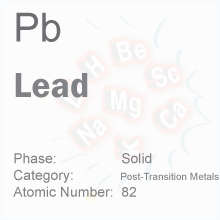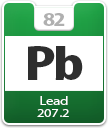

The Chemical Abstracts Service registry number is a unique identifier of a particular chemical, designed to prevent confusion arising from different languages and naming systems.ĭata for this section been provided by the British Geological Survey.Īn integrated supply risk index from 1 (very low risk) to 10 (very high risk). Where more than one isotope exists, the value given is the abundance weighted average.Ītoms of the same element with different numbers of neutrons.

This is approximately the sum of the number of protons and neutrons in the nucleus. The mass of an atom relative to that of carbon-12. The transition of a substance directly from the solid to the gas phase without passing through a liquid phase.ĭensity is the mass of a substance that would fill 1 cm 3 at room temperature. The temperature at which the liquid–gas phase change occurs. The temperature at which the solid–liquid phase change occurs. The arrangements of electrons above the last (closed shell) noble gas. These blocks are named for the characteristic spectra they produce: sharp (s), principal (p), diffuse (d), and fundamental (f). The atomic number of each element increases by one, reading from left to right.Įlements are organised into blocks by the orbital type in which the outer electrons are found. Members of a group typically have similar properties and electron configurations in their outer shell.Ī horizontal row in the periodic table. "The activated tissue can also remove glucose from the blood, which can help control diabetes," he added.A vertical column in the periodic table. "Our work shows how a regulator binds to prevent UCP1 activity, but more importantly the structure will allow scientists to rationalise how activating molecules bind to switch the protein on, leading to the burning of fat," said lead researcher Edmund Kunji, from the University of Cambridge. "This is an exciting development that follows more than four decades of research into what UCP1 looks like and how it works," said Vera Moiseenkova-Bell, an associate professor at the Beckman Center for Cryo-Electron Microscopy, US. Using the Krios G3i, a cryogenic electron microscope at the Singh Center for Nanotechnology at the University of Pennsylvania, US, the team was able to view UCP1 in atomic detail. The new study shows, for the first time, the structure of UCP1 in atomic detail, and how its activity in brown fat cells is inhibited by a key regulatory molecule, the researchers said. Despite more than 40 years of research, we did not know what UCP1 looks like to understand how it worksuntil now," Crichton said. And research has been hampered by a lack of details on the molecular make up of UCP1.
Lead atomic structure full#
"But even with more brown fatUCP1 must still be 'switched on' to gain full benefit. "UCP1 is the key protein that allows the specialised brown fat to burn off calories as heat," said Paul Crichton from the the University of East Anglia (UEA), UK. Most of our fat, however, is white fat, which stores energy, and too much white fat leads to obesity. The finding, published in the journal Science Advances, could one day combat obesity and related diseases, such as diabetes, they said.īrown fat is the good fat - it breaks down blood sugar and fat molecules to create heat and help maintain body temperature. The protein called "Uncoupling protein 1" (UCP1) allows brown fat tissue, or "good fat," to burn off calories as heat, in contrast to conventional white fat that stores calories.Īn international team, including researchers from the University of Cambridge, UK, provides crucial molecular details that will help develop therapeutics which activate UCP1 artificially to burn off excess calories from fat and sugar.

Researchers have for the first time revealed the molecular structure of a protein that allows "good fat" to burn off calories, an advance that could lead to treatments for obesity and diabetes.


 0 kommentar(er)
0 kommentar(er)
